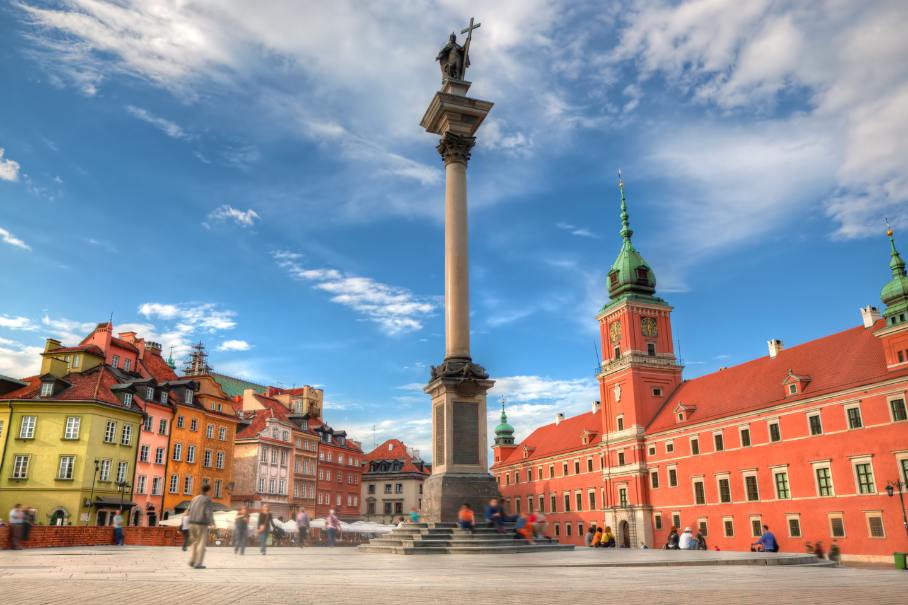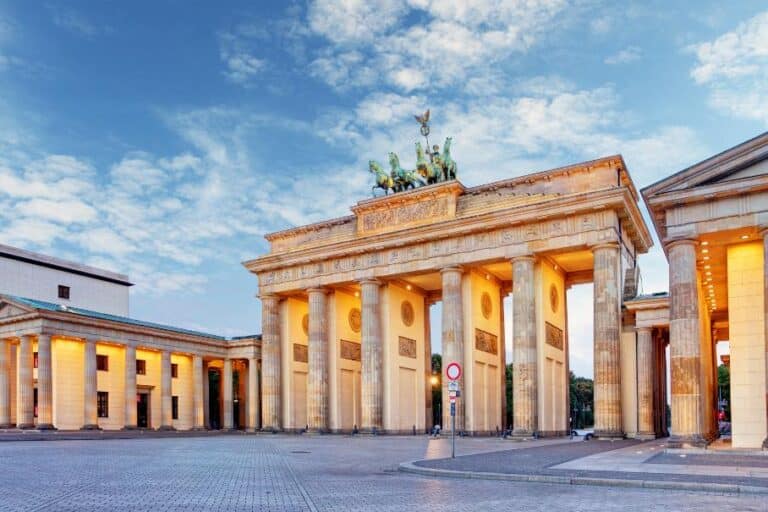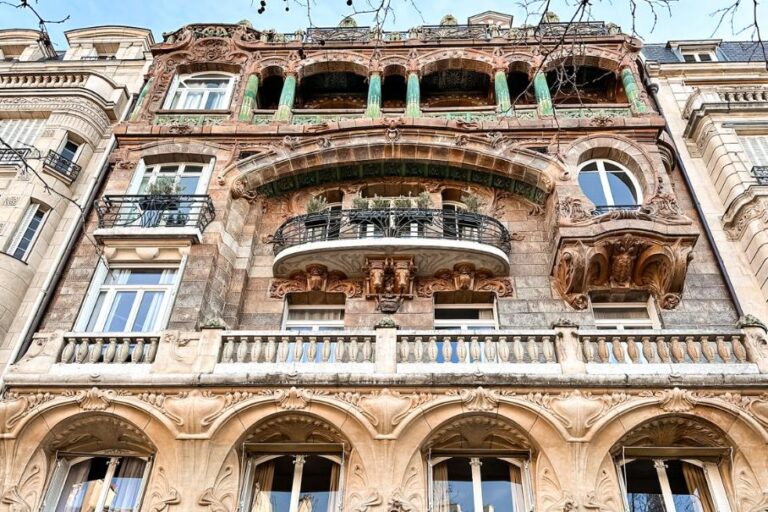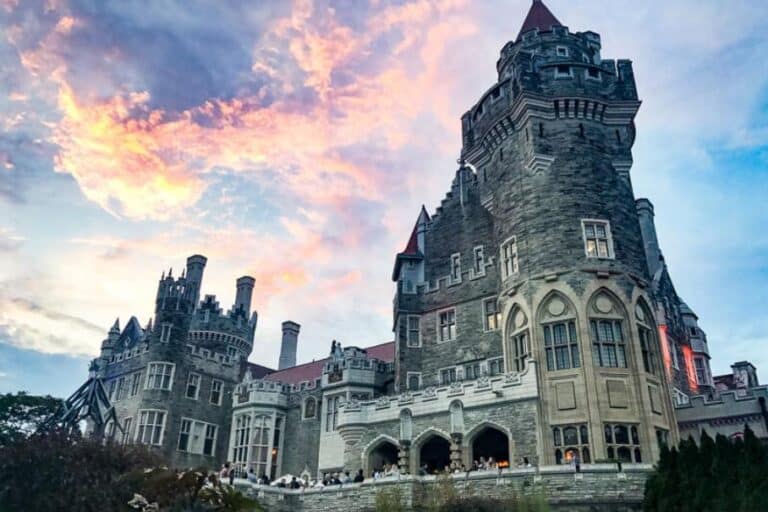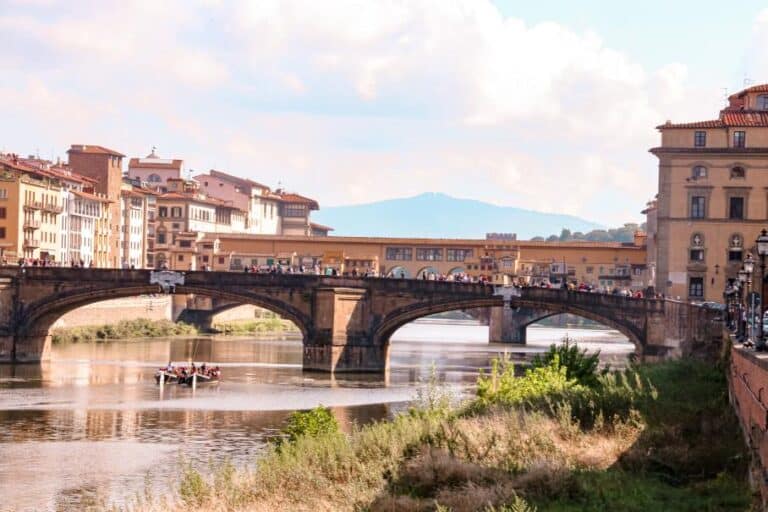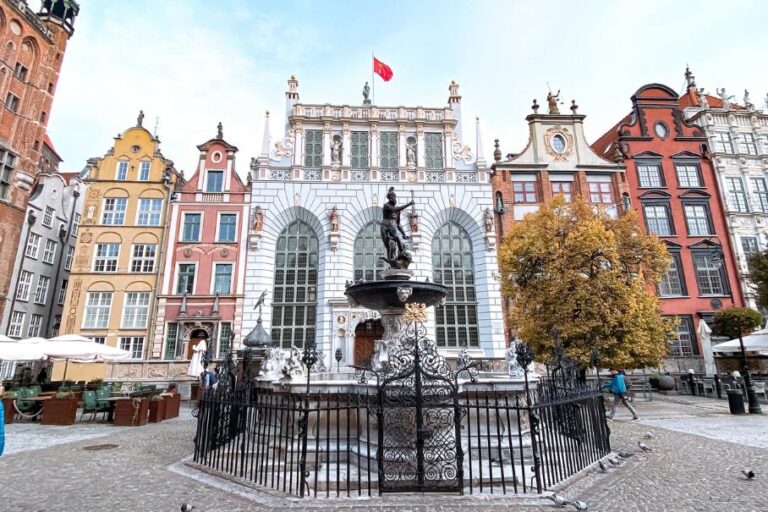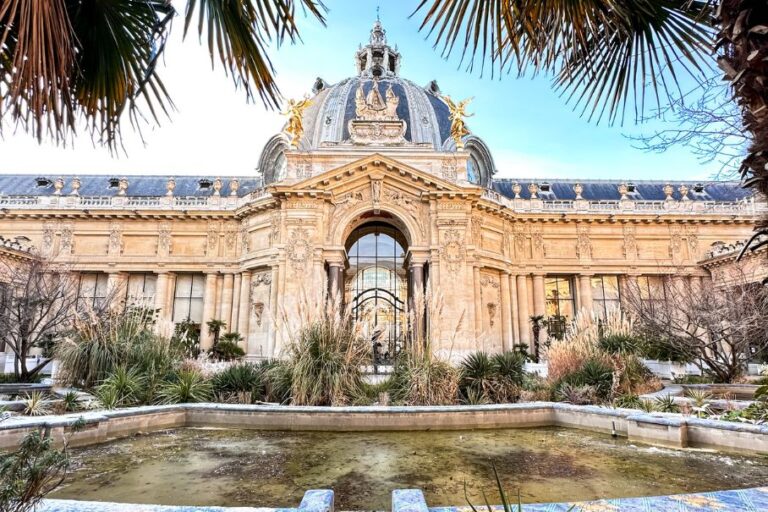Warsaw City Break: Essential Guide for Cultural Travellers
I’m a sucker for cities full of history, cool vibes and cultural attractions. While Europe is full of great city break destinations, most people tend to visit the same places. So, if you’re looking for a different, maybe even underrated, destination for your next city break, head to Warsaw, Poland. Trust me, if you love history and culture, you’ll love a Warsaw city break.
Warsaw holds a special place in my heart. It’s the city I was born in and where my family comes from. Many people will tell you that there are better cities in Poland to visit and you shouldn’t spend a lot of time in Warsaw. Don’t listen to them. Warsaw has a spectacular story and it’s the perfect place for anyone interested in history and culture.
A brief history of Warsaw
Warsaw’s story began in the 13th century when it grew as a significant settlement along the Vistula River. Its central location made it a key trading hub, and by the late 16th century, Warsaw became the capital of Poland. This change happened when King Sigismund III Vasa moved the royal court from Kraków to Warsaw, mainly because of its more central location within the kingdom.
Over the centuries, Warsaw faced many struggles, including the partitions of Poland in the 18th century and near-total destruction during World War II. Despite these challenges, Warsaw was reborn after the war. While it might not look like it, the Warsaw Old Town was carefully reconstructed, earning it UNESCO World Heritage status.
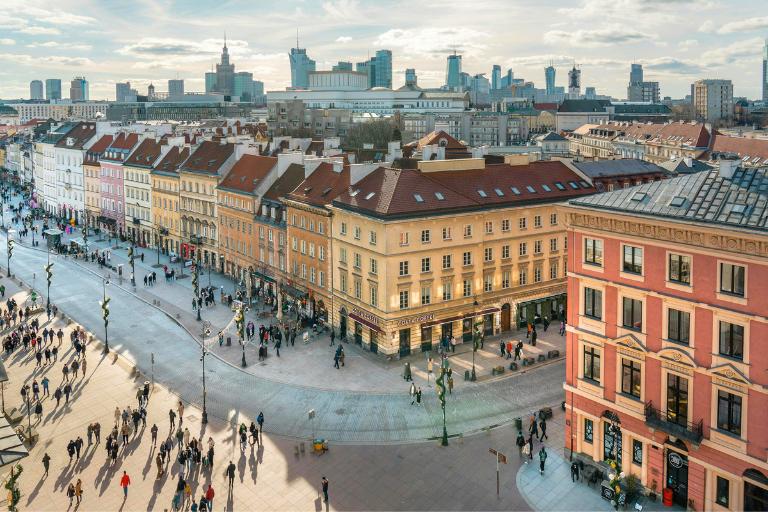
Before WWII, Warsaw was one of the most beautiful cities in Europe. Dubbed as the “Paris of the North” by its contemporaries. As the capital and royal residence, it reflected the splendour of the time. That all changed with the outbreak of the war. It’s hard to believe the city you see today was almost completely wiped out. Today, Warsaw is a vibrant city where history and modernity come together. In other words, it’s the perfect place for cultural adventures.
Warsaw city break for history buffs
If you love history, a Warsaw city break is your ideal getaway. Here, you can dive into the past and learn not only about Warsaw, but also about Poland and its people. Learn about the kings who ruled here and the regular people who fought for freedom and rebuilt the city. Warsaw is full of history. You can literally walk by monuments, plaques and displays about different parts of the past on what seems like every corner.
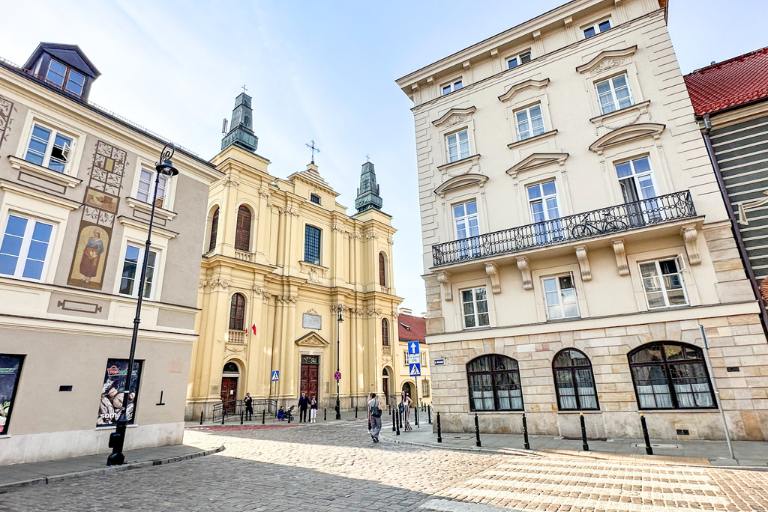
In a way, Warsaw reminds me of Berlin. It’s a city where politics and personalities collided and took centre stage throughout history. Both cities were destroyed during the war and have risen out of the ashes. Here are some places to check out if you’re here on a history-hunting Warsaw city break.
The POLIN Museum of the History of Polish Jews
This modern-looking museum tells the story of Jewish people who lived in Poland for over a thousand years. You can explore exhibits that cover everything from the vibrant Jewish communities before World War II to the tragic events of the Holocaust. The museum’s interactive displays and artifacts help bring history to life, making it an unforgettable and educational experience for all ages.
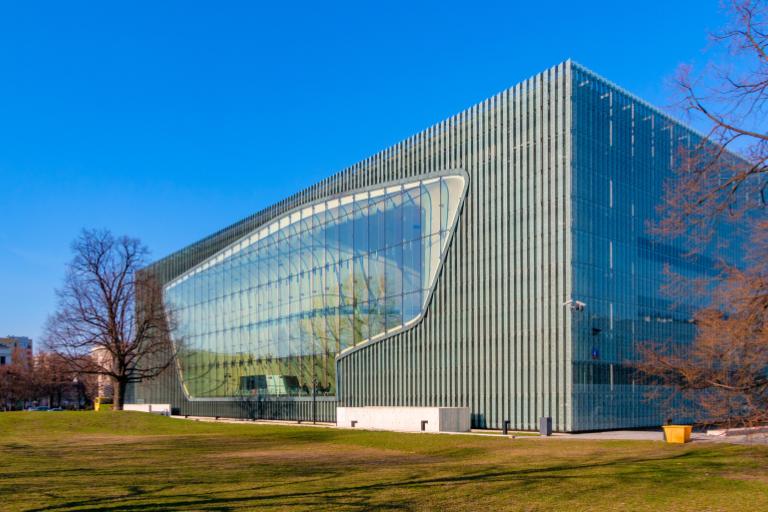
Recommended: Deepen your historical Warsaw city break with a day trip to Auschwitz-Birkenau. Book your private tour in advance.
Warsaw Rising Museum
The Warsaw Uprising Museum (referred to as Warsaw Rising Museum) commemorates the 1944 uprising against Nazi Germany. Warsaw had a powerful and determined resistance movement during the war. The attempt to take back the city lasted over a month. It was ultimately crushed by the Nazis, who were even more determined to destroy the city as punishment. Warsaw paid dearly for its insubordination.
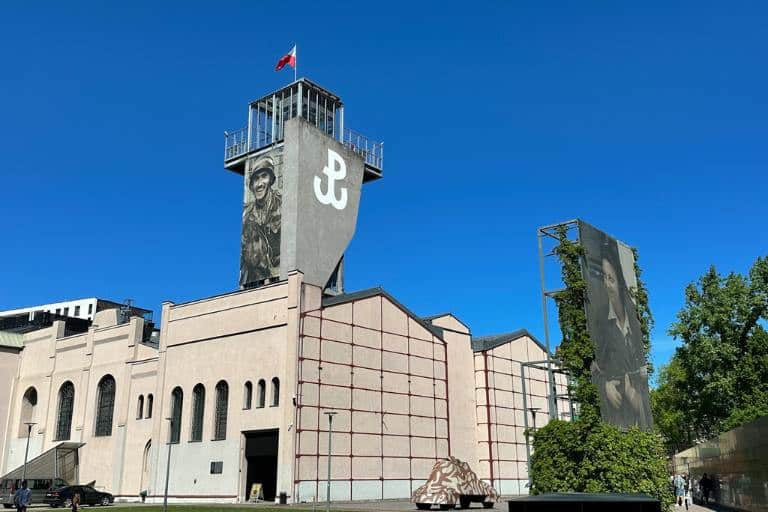
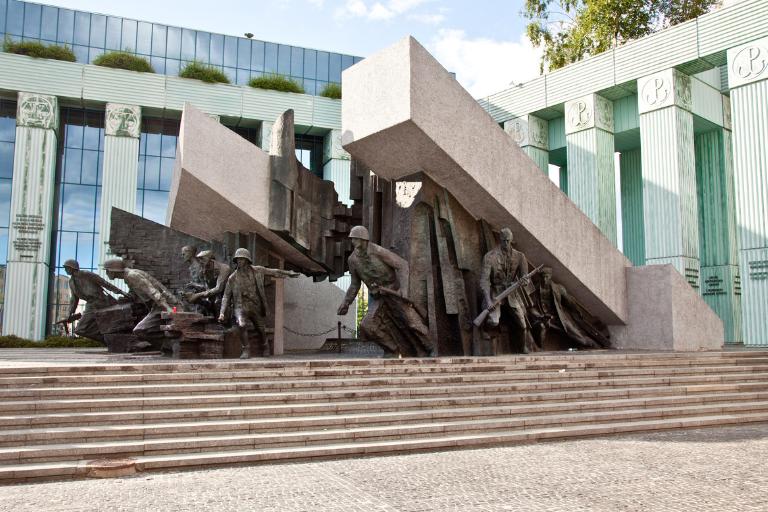
The museum offers interactive exhibits, original artifacts, and even a recreated sewer system used during the uprising. It’s a powerful place to learn about courage and resilience. You can also visit the monument dedicated to the uprising in Krasinski Square.
Tomb of the Unknown Soldier
The monument is located in Pilsudski Square and honours unknown soldiers who fought and died for Poland. The tomb is flanked by eternal flames and guarded by two soldiers. If you arrive at the hour, you’ll see the change of the guard.
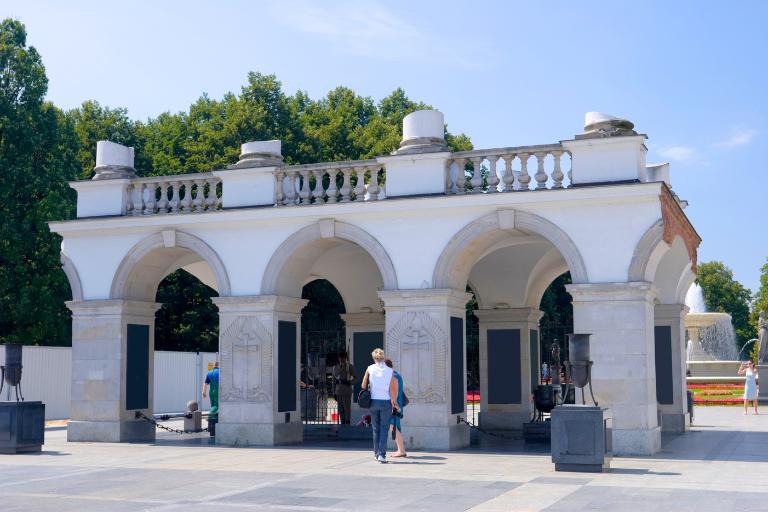
The tomb is placed within a colonnade-topped arcade that is the only remnant of what used to be the Saxon Palace (Pałac Saski in Polish). The palace was destroyed by the Nazis after the Warsaw Uprising, but there are plans to rebuild it. The current estimated completion is by 2030. One of the buildings across the square from the tomb displays images of what the palace used to look like. It’s fascinating. I managed to find the image below to see what the whole square looked like. The massive church is also gone.
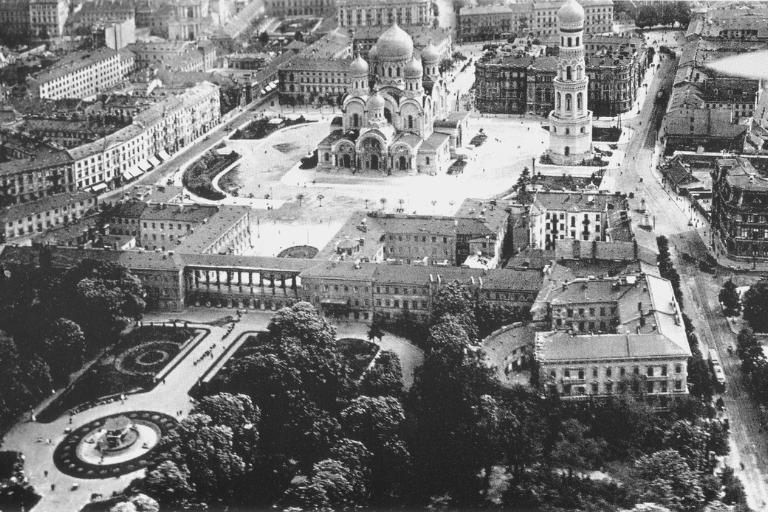
The Museum of Warsaw
If you really want to dive into the history of Warsaw, head to the Museum of Warsaw. Here, you can find exhibits of original artifacts, including pictures, maps and photographs as well as everyday objects and works of art. Learn about Warsaw’s watchmaking history, the tenement houses in the Old Town and many other objects related to the people, events and culture that have shaped the city over the centuries.
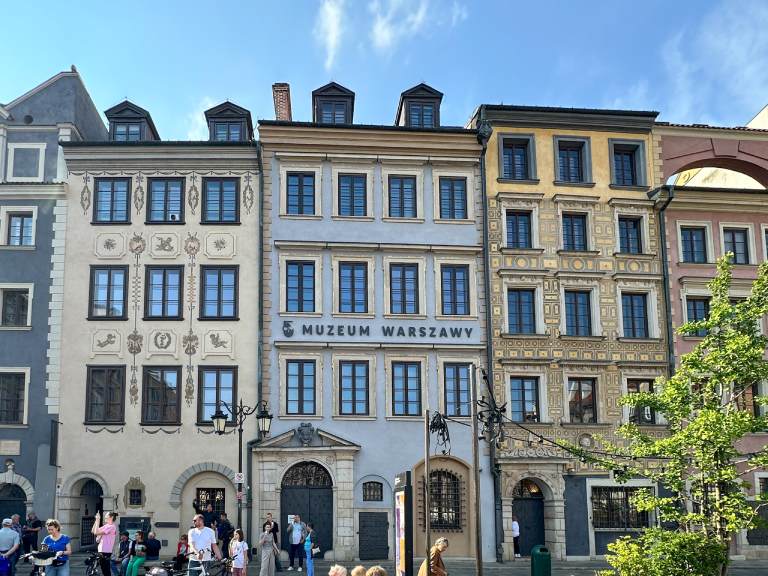
Nożyk Synagogue and Umschlagplatz
The Nożyk Synagogue is the only surviving pre-war synagogue in Warsaw and remains a place of worship and culture. Nearby, the Umschlagplatz Memorial marks the spot where Jews were gathered for deportation during the Holocaust. Together, they tell a moving story of survival and remembrance. Here, you can learn more about the Jewish population of Warsaw and their tragic story.
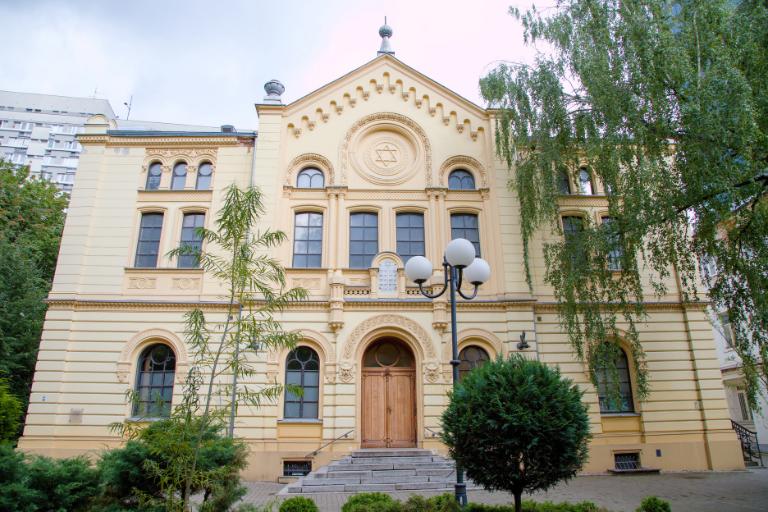
Learn more about Warsaw’s Jewish heritage:
Neon Museum
Dubbed as the first and only museum of its kind, the Neon Museum is just that – a place dedicated to neon signs from the Cold War era. If you think there wouldn’t be many of them, you’d be wrong. The museum is home to hundreds of neon signs that have been meticulously restored. These surprisingly colourful signs have been used across the Eastern Bloc as propaganda and are pretty cool to see. The museum also hosts workshops and events.
The Little Insurgent (Mały Powstaniec)
One of the most moving monuments is a statue of a child soldier outside the Old Town gates. It’s dedicated to the Boy and Girl Scouts who supported the war efforts. They weren’t selling cookies or earning badges. These kids and youth were scouts and messengers and threw Molotov cocktails at the enemy. Many died for their efforts. This one always makes me sad, but it’s a reminder of the atrocities of war and a spot you should visit.
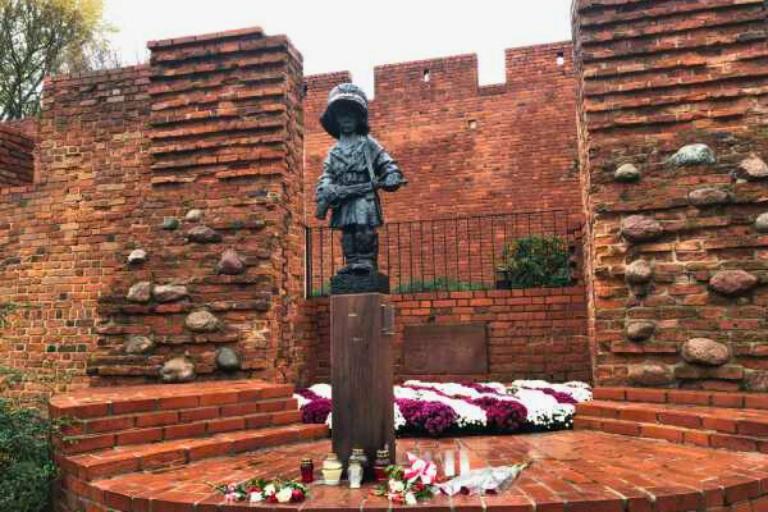
Warsaw city break tours for history buffs:
City break in Warsaw for architecture enthusiasts
Warsaw might not be known as a destination for architecture lovers like other cities in Poland, but I think it holds its own. What makes Warsaw a fascinating destination for architecture enthusiasts is the fact that it was all rebuilt. Warsaw was almost completely destroyed after the war, to the point that the officials debated whether to bother rebuilding it. What was a city of over a million people before the war became a pile of rubble, dust and ash, with few remaining residents living among the ruins.
Before the war, Warsaw was a vibrant and beautiful city with various architectural styles, including Gothic, Renaissance, Baroque and Neoclassical designs. The streets were lined with elegant townhouses, grand palaces and impressive churches, befitting a capital city with a rich cultural and artistic heritage. Warsaw’s architecture was comparable to that of other great European cities of the time, such as Paris and Vienna. This blend of styles made Warsaw a gem of Central Europe, admired for its beauty and sophistication.
Warsaw Old Town
Warsaw’s Old Town is the heart of the city’s history and a UNESCO World Heritage Site. Initially built in the 13th century, the Old Town was known for its charming Gothic and Renaissance buildings, narrow cobblestone streets and vibrant market square.
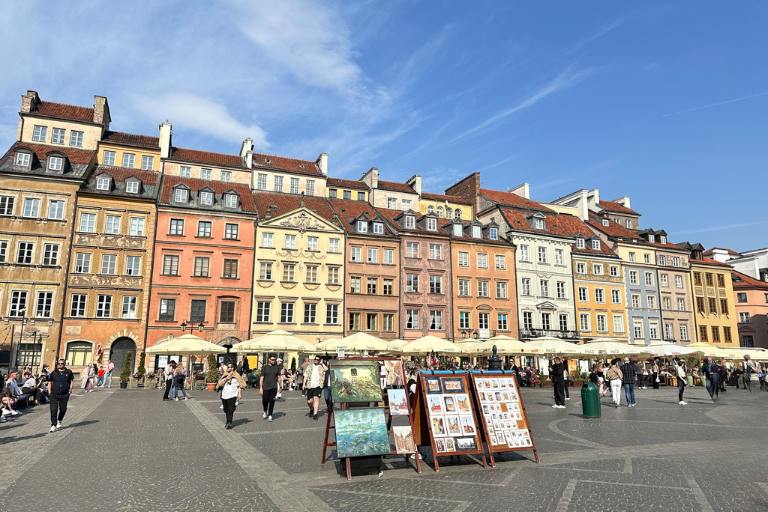
During World War II, the Old Town was completely destroyed. It was painstakingly reconstructed after the war using detailed photographs and paintings. What you see today is, in fact, post-war reconstruction, but that doesn’t mean it takes away from the experience. If you didn’t know it was destroyed, you’d think the buildings and streets around you had been here for centuries.
Royal Castle of Warsaw
The Royal Castle was the residence of Polish monarchs and a centre of political power. Its red-brick exterior and impressive interiors blend Baroque and Neoclassical styles. Completely shattered during World War II, the castle was rebuilt in the 1970s and now houses a museum showcasing Poland’s royal history and art.
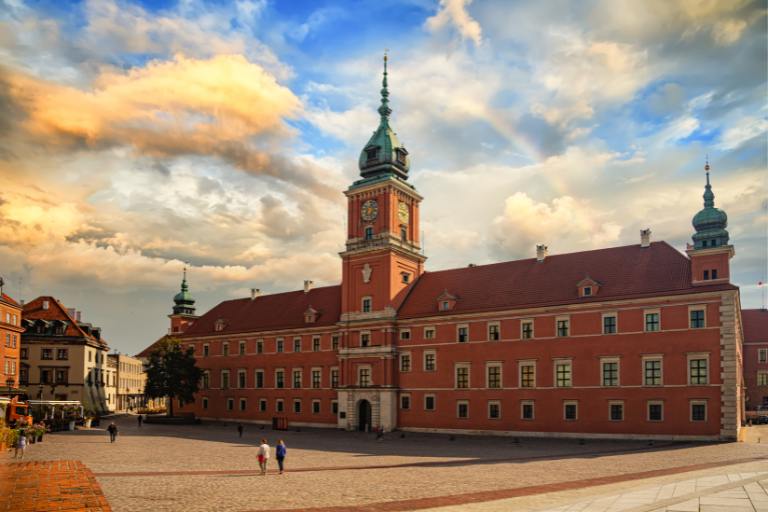
The castle and much of the surrounding area were restored based on documents and paintings by Bernardo Bellotto, known as Canaletto. I recommend you visit the castle first. Be sure to check out the video room by the cloakroom downstairs. There you will see the story of the castle. How it looked, and learn about the people who built it. There is also another video on how it was all destroyed.
Warsaw Barbican
The Warsaw Barbican was built as a defensive fortress to protect the city from invaders. Built in the 16th century, it featured thick brick walls and defensive towers. While much of it was destroyed during the war, parts of the Barbican were reconstructed, offering visitors a glimpse into Warsaw’s medieval past.
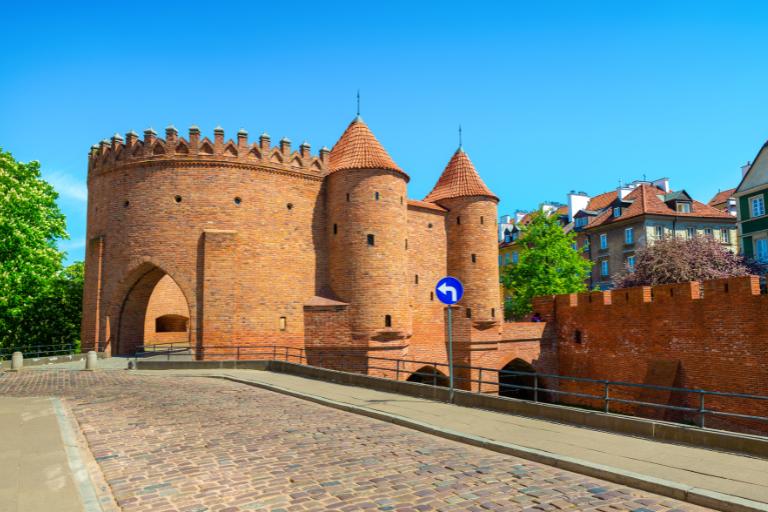
St. John’s Cathedral
St. John’s Cathedral (Archikatedra św. Jana) is one of Warsaw’s oldest and most significant churches. Built in the 14th century, it originally featured a Gothic architectural style with its soaring arches and pointed windows. This cathedral played a key role in Poland’s history, hosting royal coronations and burials.
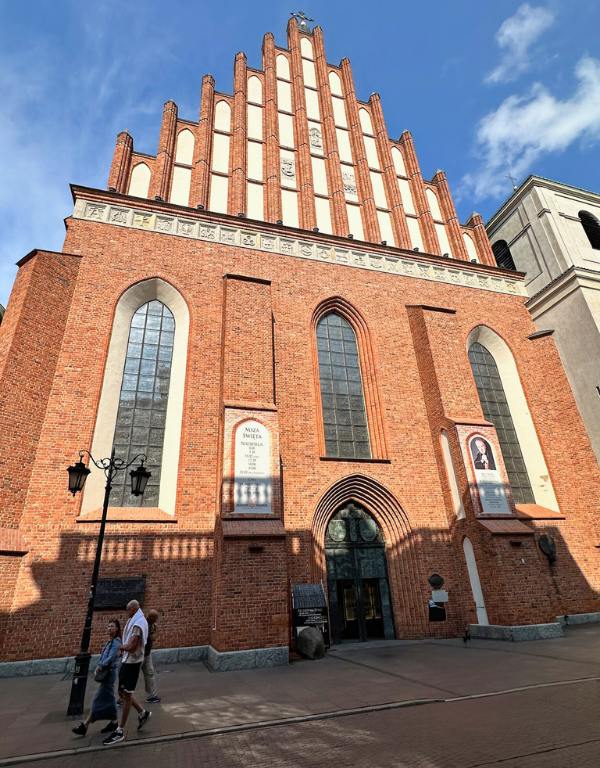
It was rebuilt a few times, and its pre-war appearance was the English Gothic Revival style. Unfortunately, it was destroyed during World War II but rebuilt in the 1950s to resemble its original Gothic design.
Recommended: Book an architectural tour of Warsaw to learn more about the city’s history and its iconic buildings and churches.
Krasiński Palace
This Baroque Krasiński Palace was built for the nobleman Jan Dobrogost Krasiński in the 17th century. Based on the grand design and elaborate decor, he did well for himself. The palace offers the grandeur of 17th-century Polish aristocracy vibes and was later used as the seat of the Supreme Court. While heavily damaged during the war, it was restored and now houses part of the National Library. You can visit for free except on Tuesday.
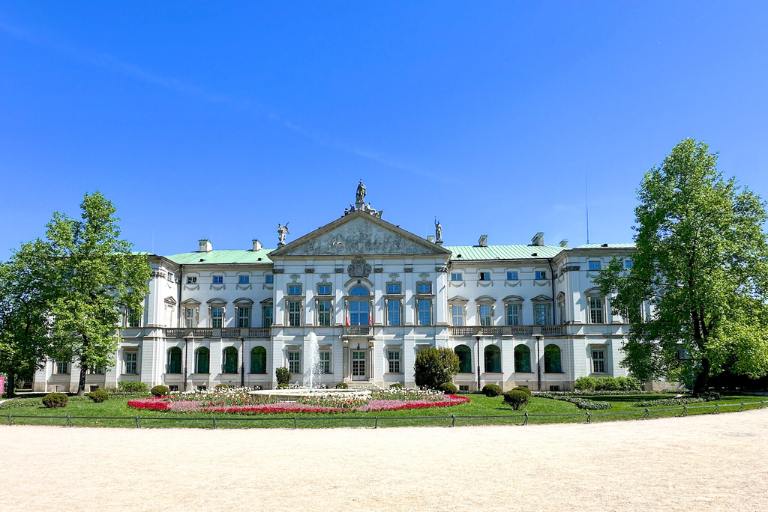
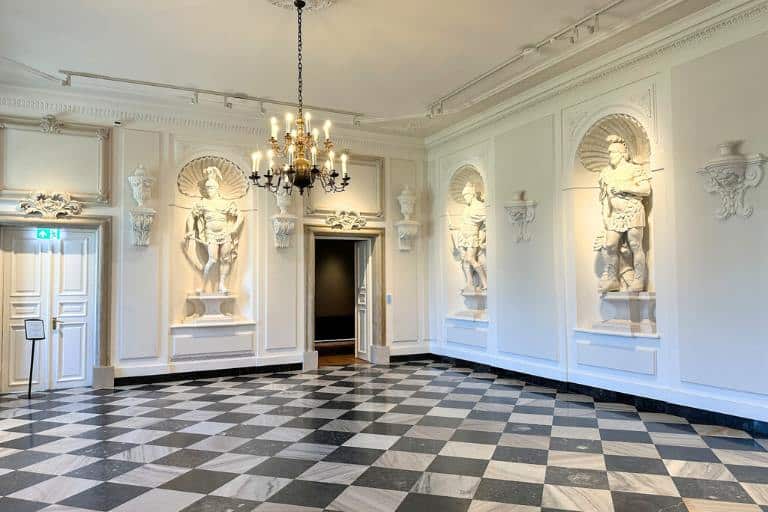
Wilanów Palace
Often called the Polish Versailles, Wilanów Palace is a spectacular example of Baroque architecture. If your Warsaw city break is about exploring the royal past, you must come to Wilanów. This royal residence was spared the destruction of World War II, making it one of Warsaw’s few original structures. Here, you can explore its richly decorated rooms, extensive art collections and beautifully landscaped gardens.
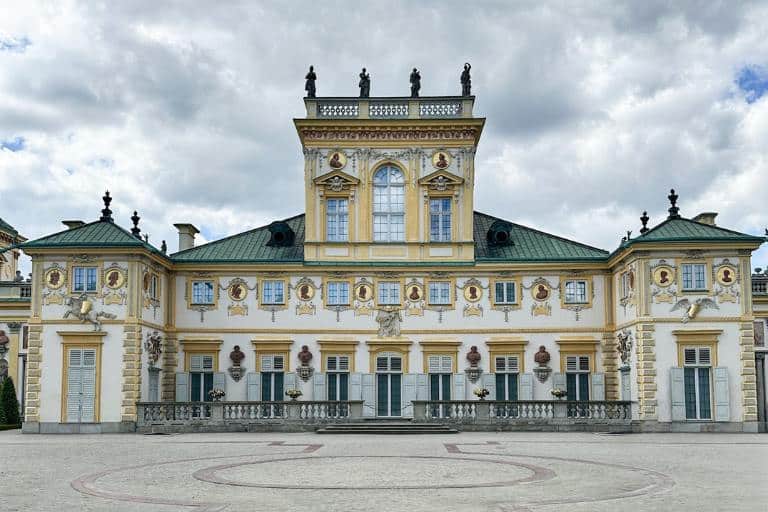
Łazienki Palace
Located in Łazienki Park, this palace is also known as the Palace on the Isle or Baths Palace (Pałac Na Wyspie, Pałac Łazienkowski). Originally a bathhouse, it was transformed into a Neoclassical masterpiece by King Stanisław August Poniatowski. The palace and its surrounding parklands offer a peaceful escape, with its elegant design reflecting 18th-century tastes. Despite wartime damage, it has been meticulously restored.
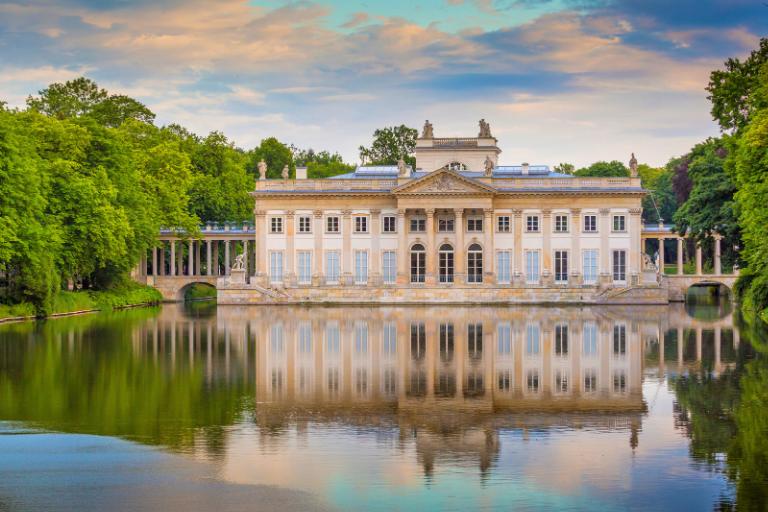
Czapski Palace
For a taste of Rococo, head to Czapski Palace. It was initially constructed in the late 17th century and reconstructed in the early 18th century. The palace has seen many illustrious residents, including the composer Frederic Chopin and his family. The place had many owners, including several aristocratic families. Like many other palaces, it was destroyed during the war. After a meticulous restoration, today it’s home to the Academy of Fine Arts.
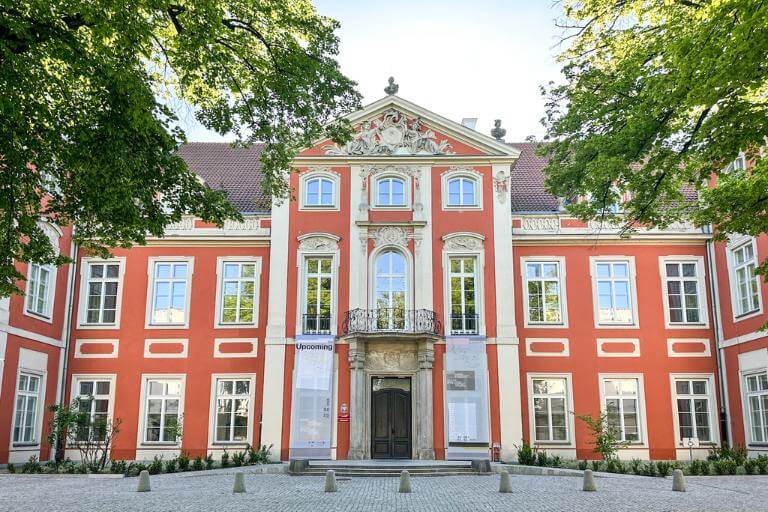
The Rabbit House
Today, the Rabbit House (Królikarnia) houses the Museum of Sculpture. The name comes from the fact that it used to be a hunting lodge for rabbit hunting. Inspired by a Renaissance villa in Italy, this charming Neoclassical palace was built in the 18th century for Charles Thomatis, Count de Valéry. The count was a notorious gambler and a womanizer, and some had referred to him as the king’s pimp.
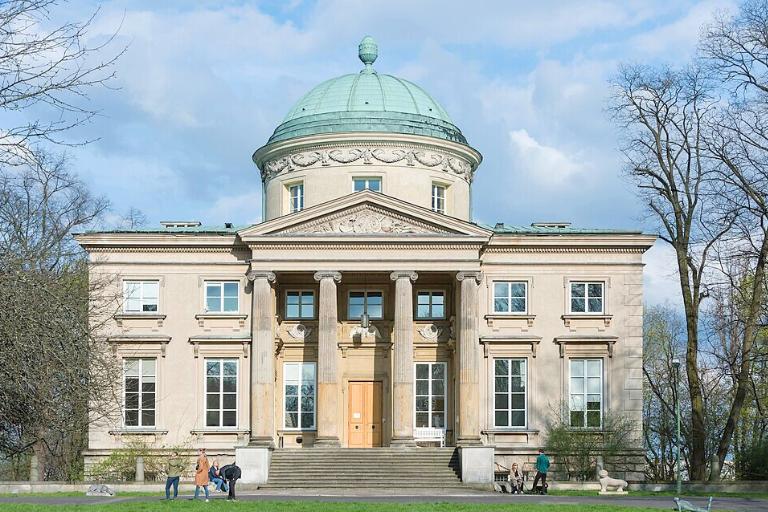
The palace was destroyed and rebuilt several times. Today, you can ponder if this was just a hunting lodge or a fancy brothel (as was implied by some) as you explore. Either way, there is a lot of history here, and the architecture is just a bonus.
Grand Theatre
The Grand Theatre (Teatr Wielki) was built between 1825 and 1833. Designed in the Neoclassical style by Italian architects, it was used for ballet and opera performances until it was destroyed during the war. While it was rebuilt after the war, its original splendour has been preserved. When it opened after the restoration, the Grand Theatre was one of Europe’s largest state-of-the-art theatres.
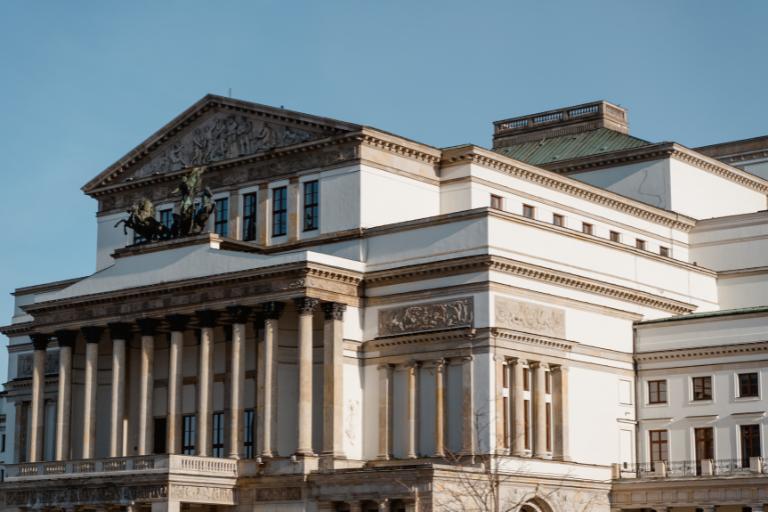
Palace of Science and Culture
For a more recent taste of history, head to the Palace of Science and Culture. This towering structure was a gift from the Soviet Union and symbolized Socialist Realism architecture. Completed in 1955, it is the tallest building in Warsaw. It houses theatres, museums and an observation deck offering panoramic city views. Though controversial, it remains an iconic part of Warsaw’s skyline.
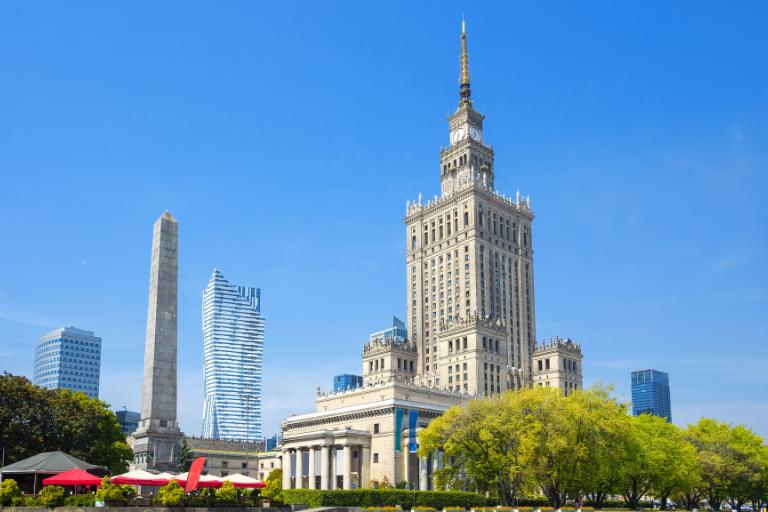
Warsaw Spire
For a taste of modern Warsaw, check out the Warsaw Spire. This sleek and modern skyscraper is a more recent addition that reflects the city’s growth. Its contemporary glass design stands out among Warsaw’s historic architecture. Completed in 2016, it symbolizes Warsaw’s transformation into a global business hub.
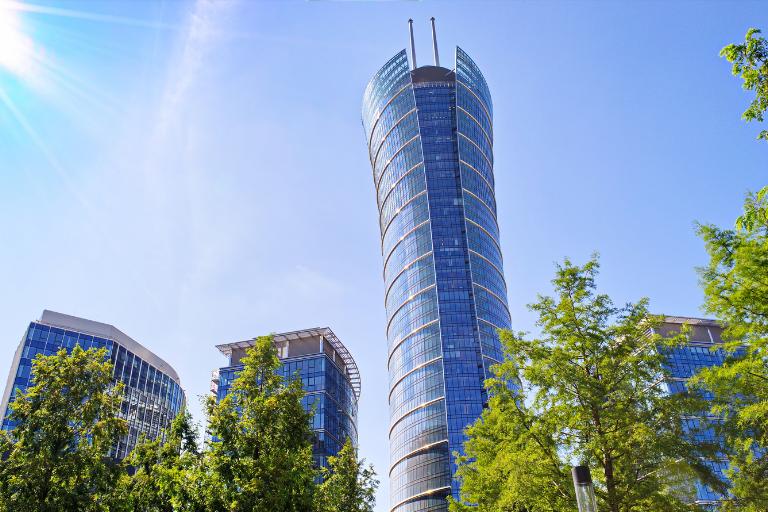
Złote Tarasy
Złote Tarasy is another striking example of modern architecture. With its wavy glass roof, it’s a shopping and entertainment complex. Located in the city centre, it blends futuristic design with practical functionality. It’s a great place to take a break from exploring or go to if you want to shop during your Warsaw city break.
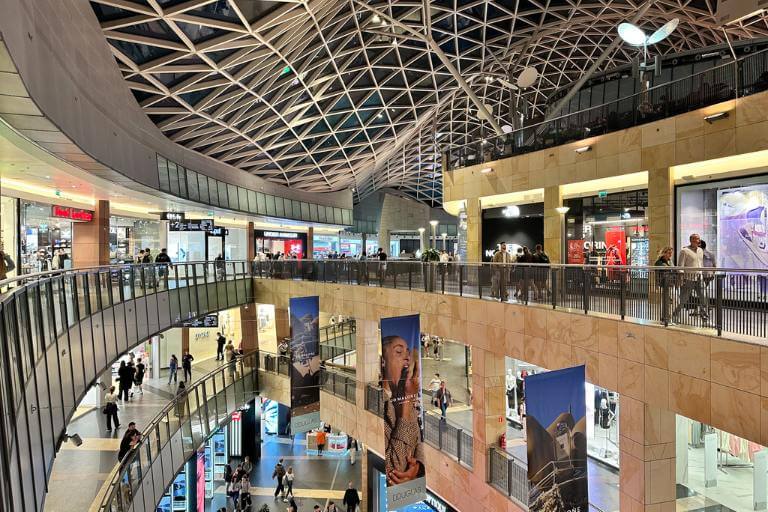
Warsaw city break for culture vultures
Warsaw is a city that was the home of Polish kings for centuries. As a royal city and Poland’s capital, Warsaw delivers everything cultural travellers are looking for. Whether you’re into learning more about Warsaw’s royal past, its fight for survival or post-war evolution, you can find it here. Once you’ve explored it all, take a break and immerse yourself in the local vibe.
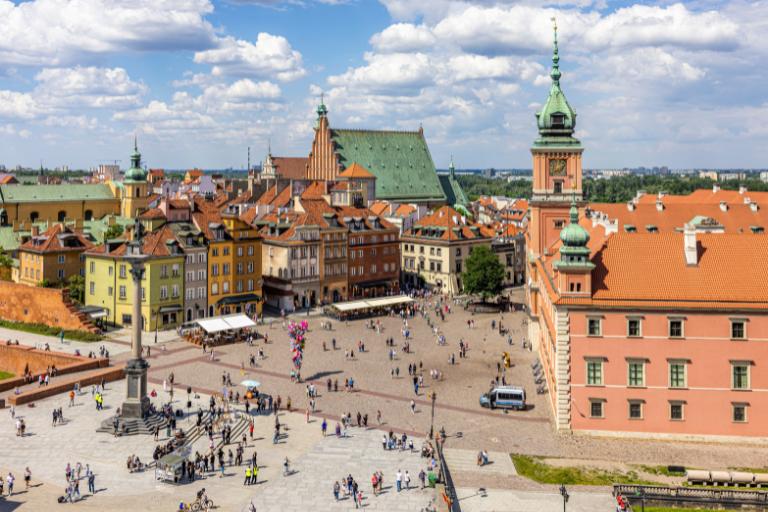
Warsaw is a city where you can sit back and relax as the layers of history settle around you. Walk in the footsteps of Frederic Chopin, Marie Curie, numerous Polish kings and countless revolutionaries as you explore Warsaw.
Trace the Royal Route from Old Town to Wilanów
The Royal Route is one of Warsaw’s most famous walks, connecting some of the city’s most significant landmarks. Starting in Castle Square in the Old Town, the route stretches down Krakowskie Przedmieście and Nowy Świat streets, passing historic churches, palaces, and the Presidential Palace. The journey ends at Wilanów Palace. You can enjoy beautiful architecture and explore charming cafes and shops along the way.
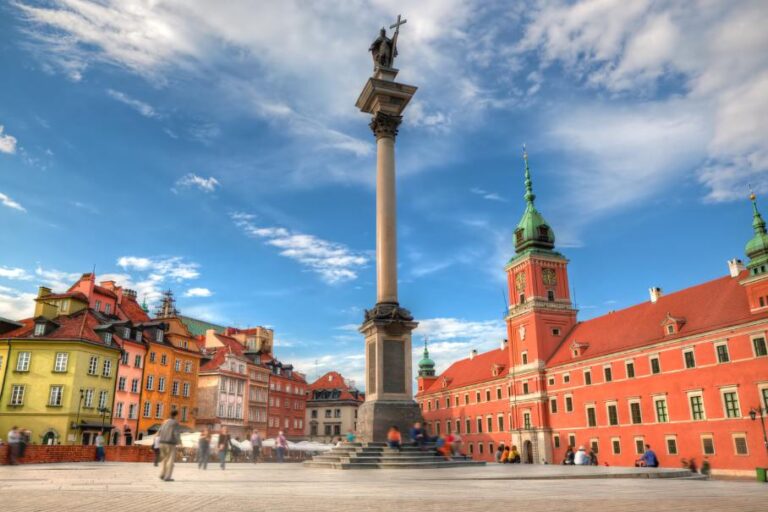
Stroll through Łazienki Park
Łazienki Park is Warsaw’s largest park. It’s a peaceful escape from the city’s hustle and bustle that features winding paths, lush gardens and serene ponds. You can combine this with a visit to the Łazienki Palace or simply come to enjoy the park. Don’t miss the Chopin Monument, a popular spot for free piano concerts in the summer.
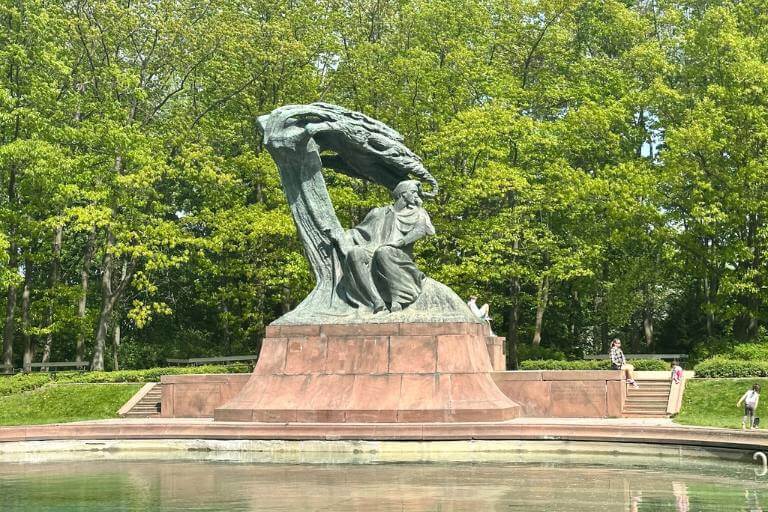
Venture in the footsteps of Chopin
Fryderyk Chopin is Poland’s most famous composer. Visit the Chopin Museum (located in a Baroque palace) for a fascinating look at his life. The museum offers multimedia exhibits and his personal artifacts. You can also enjoy live Chopin concerts in venues like the Łazienki Park or local music halls.

Visit the Mermaid statue
The Warsaw Mermaid, or Syrenka, is the city’s symbol and can be found in the heart of the Old Town Market Square. This iconic statue represents the city’s strength and resilience. Surrounded by charming cafes and street performers, it’s a must-see during a visit to Warsaw.
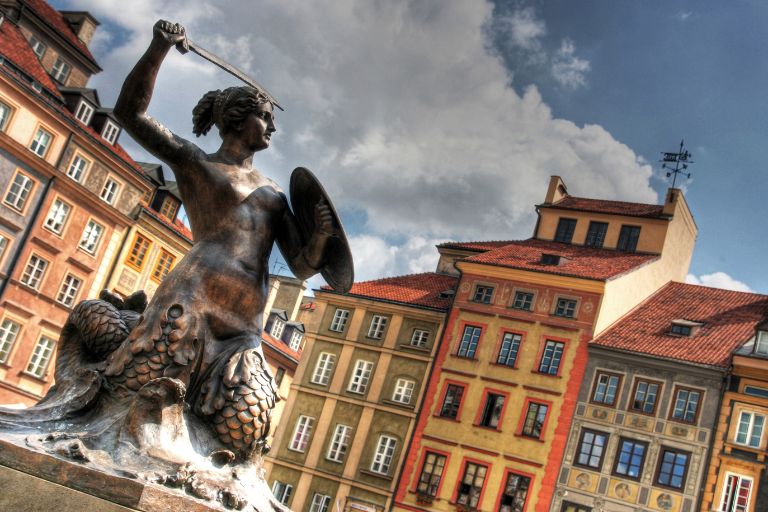
Go museum hopping
Warsaw is home to impressive museums catering to diverse interests. Highlights include the National Museum, showcasing centuries of Polish art, and the Museum of Modern Art for contemporary works. The Copernicus Science Centre offers hands-on exhibits perfect for families, while the Museum of Warsaw delves into the city’s rich history.
Cultural tours for your Warsaw city break:
Stroll along the Vistula Boulevards
The Vistula Boulevards are a vibrant area along the riverbanks, perfect for a leisurely walk or a bike ride. The boulevards feature outdoor cafes, art installations, and green spaces where locals and visitors gather to relax. In the summer, you can even enjoy live performances and open-air events.
Warsaw University Library and its rooftop garden
The Warsaw University Library is not just for students. Its striking modern architecture and extensive collection of books make it a fascinating visit. The rooftop garden is a hidden gem, offering stunning views of the city and the Vistula River. It’s a peaceful spot to unwind and enjoy the natural beauty above the city.
What to eat and drink on your Warsaw city break
Warsaw offers an incredible variety of food options, from traditional Polish dishes to modern international cuisine. Whether you want to go out for dinner in a historic Old Town restaurant, sample street food at a bustling market, or experience fine dining in a Michelin-starred establishment, Warsaw’s culinary scene won’t disappoint.
Polish culinary staples
No trip to Warsaw is complete without trying iconic Polish dishes. Start with pierogi, delicious dumplings stuffed with various fillings such as potatoes, cheese, mushrooms, or meat. Another must-try is żurek, a tangy rye soup often served with sausage and a boiled egg. For a crispy treat, sample placki ziemniaczane, which are potato pancakes typically enjoyed with sour cream.
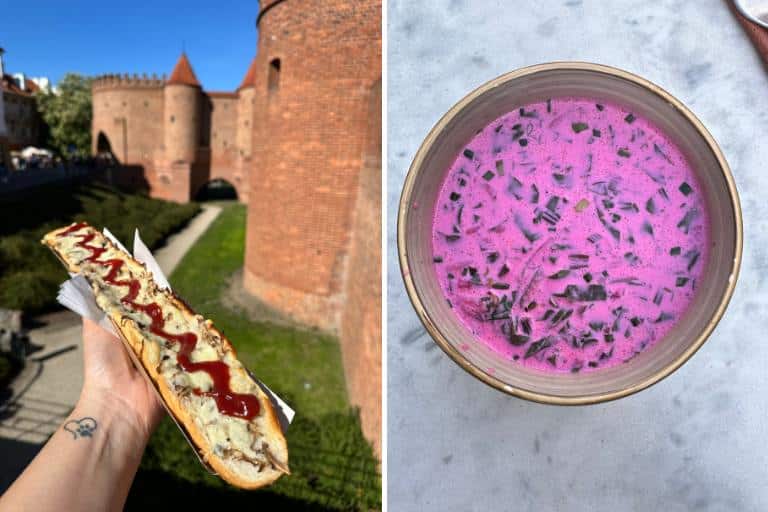
Street food and sweet treats
Warsaw’s street food scene offers plenty of local delights. Don’t miss zapiekanka, a Polish-style baguette pizza topped with cheese, mushrooms and various sauces. Another popular choice is pączki, fluffy Polish doughnuts filled with jam or custard, perfect for satisfying your sweet tooth.
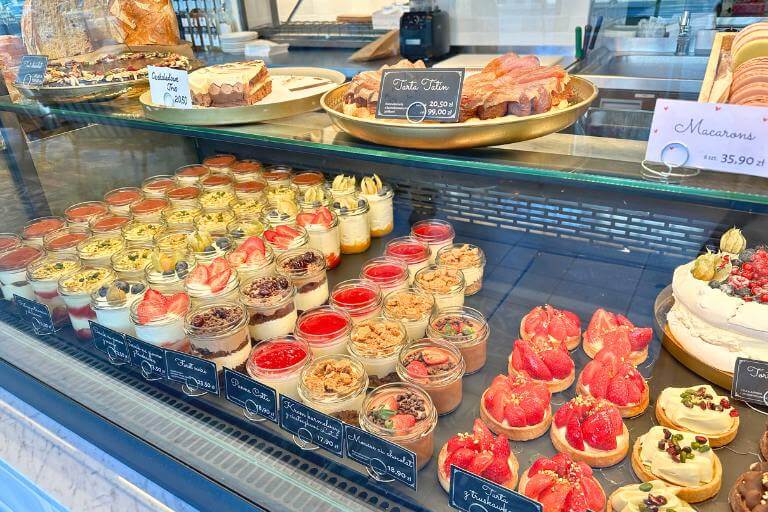
Vodka Museum and Polish drinks
Poland is famous for its vodka, and the Vodka Museum in Warsaw is the perfect place to learn about its history and production. You can join guided tastings to sample different types of vodka and discover how it’s traditionally enjoyed. Craft beer enthusiasts will also appreciate Warsaw’s growing number of breweries offering unique and locally made options. Treat yourself to a vodka tasting experience and learn about how it’s made.
Food tours and local markets
Join a guided food tour for a deeper dive into Warsaw’s food culture. These tours often include stops at local markets like Hala Koszyki, a vibrant food hall where you can taste Polish classics and modern dishes in a lively atmosphere. You’ll also learn about the history and traditions behind the city’s culinary staples.
Fine dining and international flavours
Warsaw is also home to Michelin-starred restaurants where you can experience innovative dishes inspired by Polish flavours and ingredients. These high-end dining spots blend creativity and tradition, making them a highlight for foodies visiting the city. But the best part of the culinary scene in Warsaw (at least for me) is the abundance of international foods. From Greek food to ramen and everything in between, Warsaw is definitely a foodie destination.
Where to stay on your Warsaw city break
Warsaw has 18 different districts, but I recommend staying closer to the attractions if you’re coming here for a city break. Here are the ones you should consider for your Warsaw city break. Each of these districts has its own personality, so whether you prefer historical charm, modern luxury, or a trendy vibe, you’ll find the perfect place that works for you.
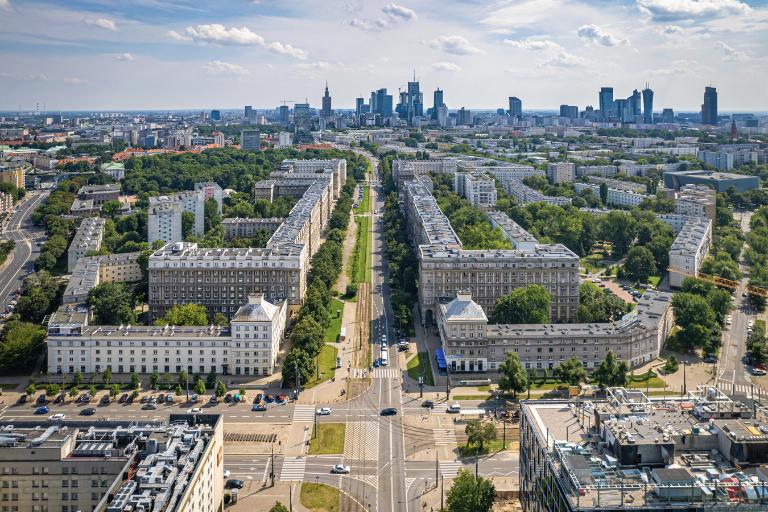
- Old Town (Stare Miasto): If you love history and charm, the Old Town is the ideal spot for your Warsaw city break. Here, you’ll find boutique hotels and guesthouses where you can immerse yourself in the history and culture.
- Śródmieście (City Centre): Staying in the City Centre offers convenience and modern amenities. This bustling area is home to major landmarks like the Palace of Culture and Science, high-end shops and a vibrant dining scene. It’s a great choice for first-time visitors who want to be in the heart of the action.
- Praga: Located across the Vistula River, Praga is a trendy and artistic district known for its industrial charm, street art and lively nightlife. It’s an ideal spot if you’re looking for a more bohemian atmosphere and unique accommodations, like converted warehouses and boutique lofts.
- Mokotów: For a quieter stay, Mokotów offers leafy streets, local cafes and beautiful parks. This residential district is perfect for families or visitors who want a peaceful retreat while still being within easy reach of the city centre.
- Żoliborz: Another serene neighbourhood, Żoliborz features elegant townhouses, green spaces and a relaxed vibe. It’s the perfect area for a laid-back Warsaw city break with easy access to local markets and cultural spots.
- Wola: Blending modern skyscrapers with traces of Warsaw’s industrial past, Wola is an up-and-coming district ideal for business travellers and those looking for contemporary hotels. It also offers excellent transport links and a growing food scene.
Practical tips for your Warsaw city break
Here are some things to keep in mind when planning your Warsaw city break.
Getting around
Warsaw has an excellent public transport system that includes trams, buses, and a metro network, making it easy to navigate the city. Trams and buses cover most areas, while the metro is great for getting between key districts quickly. Tickets are affordable and can be used across all modes of transport, with options for single rides or unlimited day passes. Many attractions in the city centre and Old Town are within walking distance, so comfortable shoes are a must for exploring on foot.
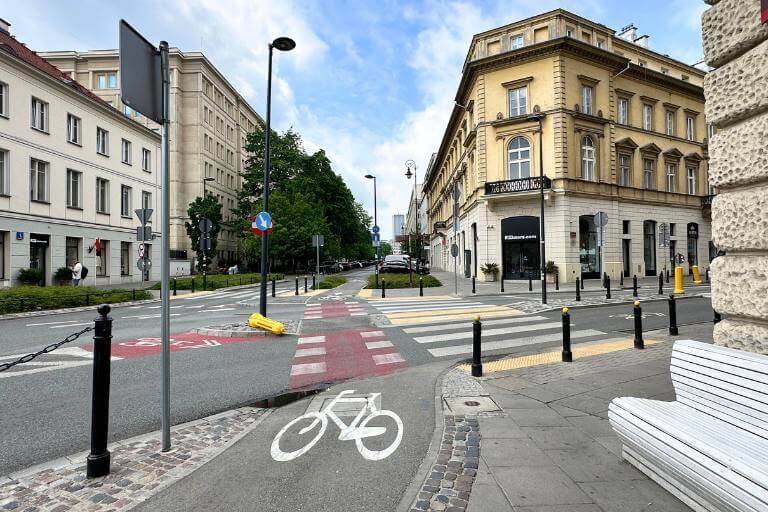
Warsaw also had plenty of bike lanes, so you can easily rent a bike or a scooter and get around this way. Just make sure to stay aware of your surroundings, as there are many bikers around and you don’t want to get in anyone’s way. I also take Bolt or Uber when I’m in Warsaw as it’s pretty affordable and fast to get around.
Best time to visit
The best times to visit Warsaw are in the spring (April to June) and fall (September to October). During these seasons, the weather is mild and the city is alive with blooming flowers or colourful foliage. Compared to summer months, crowds are smaller, making it easier to enjoy popular attractions. Winter has its charm, too, especially around Christmas, when markets and festive decorations brighten up the city.
Currency and costs
The local currency in Warsaw is the Polish złoty (PLN). Compared to many other European capitals, Warsaw is budget-friendly, offering excellent value for accommodation, dining and transportation. Cash is widely accepted, but credit cards are commonly used in restaurants, shops, and taxis. ATMs are plentiful, and it’s easy to exchange foreign currency in the city.
Language tips
Polish is the official language, but English is widely spoken in tourist areas, hotels and restaurants. Learning a few basic Polish phrases before your Warsaw city break can go a long way in showing politeness and engaging with locals. Simple words like “dzień dobry” (good day), “dziękuję” (thank you) and “proszę” (please/you’re welcome) are appreciated and easy to learn. Many signs and menus in the city also have English translations, making it easy for visitors to navigate.
Final thoughts on a Warsaw city break
To me, Warsaw is an ever-evolving city that seamlessly blends past with present. I love that they are constantly rebuilding and restoring the glory of the city that was destroyed by the war. Are there prettier cities in Poland? Sure. However, Warsaw is the epitome of the determination and resilience of the Polish people. They all came together to rebuild the city from the rubble it was left in after the war. In many ways, Warsaw belongs to all Polish people.
Even though my family moved from Warsaw, it’s a city that will always be a part of me. I think it’s the perfect destination for anyone interested in history, art and culture. A Warsaw city break is your chance to dive into Polish history and explore this underrated city and everything it offers. So, what are you waiting for? Book your Warsaw city break getaway and get ready for an unforgettable adventure.

